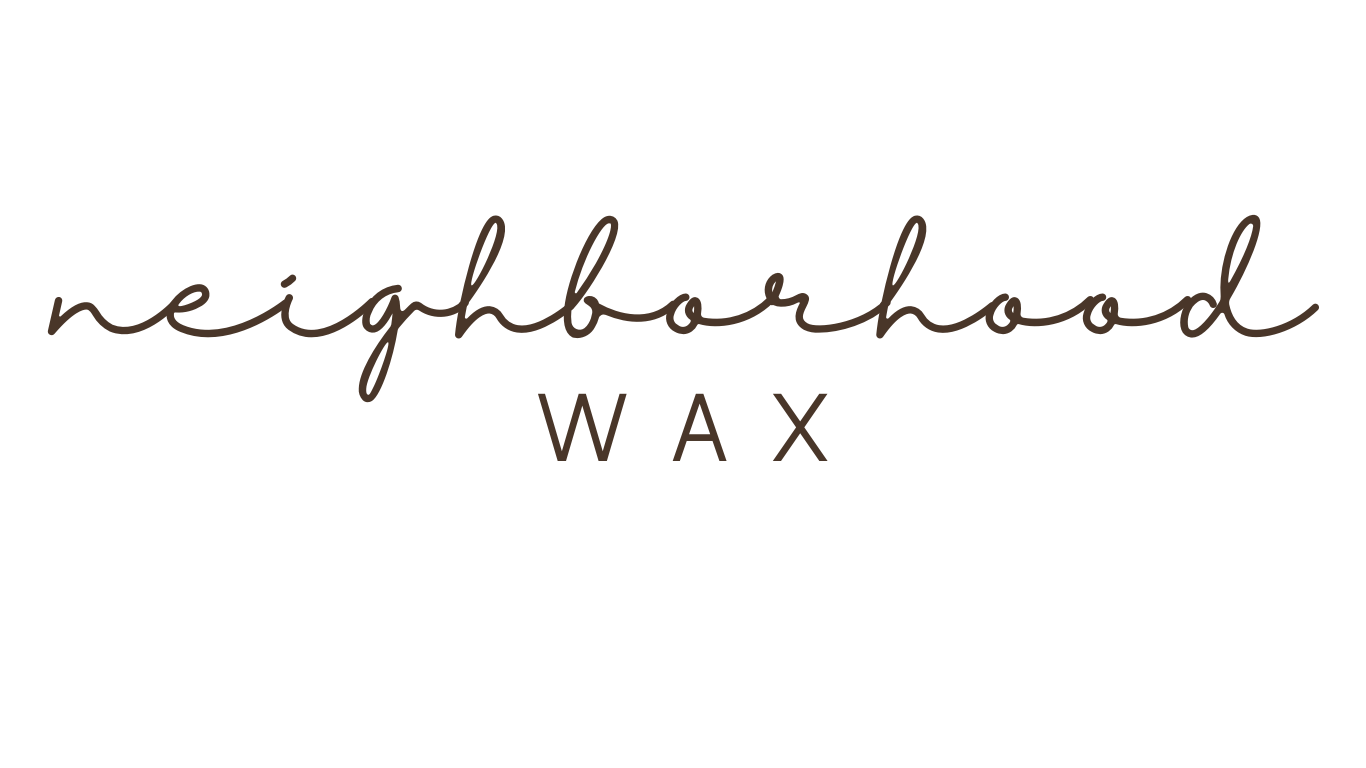The Truth About Ingrown Hairs (and How to Actually Prevent Them)
Let’s talk about it: ingrown hairs.
They’re one of the most common frustrations when it comes to hair removal—especially after shaving or waxing. Fear not! With the right technique, proper aftercare routine, and a little help from your esthetician, ingrown hairs, bumps and irritation are absolutely preventable.
At Neighborhood Wax, we specialize in smooth skin and smart aftercare. Whether you’ve struggled with bumps in the past or want to avoid them altogether, here’s everything you need to know about why ingrown hairs happen—and how to stop them in their tracks.
What Is an Ingrown
Hair, Anyway?
An ingrown hair occurs when a hair grows back into or under the skin instead of up and out. It can look like a red bump, a tiny blackhead, feel tender or itchy, and sometimes even become inflamed or infected. They most commonly show up in areas where hair is coarse or curly—like the top and sides of the bikini line, underarms, or legs.
What Causes Ingrown Hairs?
Several things can lead to ingrowns, especially after waxing or shaving:
Dead skin cell buildup which clogs the hair follicle
Lack of exfoliation
Improper hair removal technique
Dry or dehydrated skin
Touching or picking at your skin post-wax
Dirt, sweat and bacteria
How to Prevent Ingrown Hairs After Waxing
Here’s the game plan we recommend to all our clients—especially if you’re prone to ingrowns:
Exfoliate Regularly - Start exfoliating 2–3 days after your wax, and continue a few times per week. This helps remove dead skin cells and keeps pores clear so hairs can grow in the right direction. Look for gentle exfoliants (like enzyme scrubs or ingrown serums) that don’t strip or irritate your skin. We carry a few in-studio that are acne-safe and specially formulated for post-wax skin.
Moisturize Daily - Dry skin = more blockages. Hydrated skin is more supple, making it easier for hairs to grow out properly. Use a fragrance-free moisturizer that won’t clog pores.
Avoid Tight Clothing for 24–48 Hours - We know you love your leggings, but after a wax, tight clothes can trap sweat and friction against freshly waxed skin—creating the perfect environment for ingrowns. Go loose and breathable!
Hands Off! - Try not to touch, pick, or squeeze any bumps. This can introduce bacteria and cause scarring or infection. If something doesn’t look right, let your esthetician take a look.
Pro tip: Hydrated skin also helps your wax last longer and your waxing service feel more comfortable.
Manual Exfoliation vs. Chemical Exfoliation: What is the difference and why are they both important?
When it comes to skincare of any kind, there are two methods of exfoliation, manual and chemical. Both are equally important and work best when partnered together. Think of it like sweeping before you mop. You sweep to get rid of surface debris and obstructions before mopping to reveal clean, smooth and shiny floors. You can do one without the other but you get the most impact when you do both.
Manual exfoliation
Manual exfoliation usually involves a tool or product to physically remove dead skin cells from the surface of the skin.
Popular tools include, exfoliating gloves, brushes, sponges, or loofahs etc. Manually exfoliating products, are often scrubs with sugar or salt particles that help slough off dead skin. This method is crucial to getting rid of dead skin cells on the outermost level and allows chemical exfoliators to penetrate deeper and become more effective.
Chemical Exfoliation
Chemical exfoliation is a method of exfoliating the skin by applying targeted products that contain AHA and BHA acids. These are skin-safe exfoliating ingredients that include glycolic, salicylic and lactic acids.
These ingredients break down the bonds that hold dead skin cells together and they promote cell turnover which reveals smoother softer skin. When applied after manual exfoliation is complete, they become more effective at preventing ingrown hairs from forming in the first place.
What If You Already Have Ingrown Hairs?
Don’t panic. There are a few ways to calm and clear them up:
Use a targeted ingrown treatment serum with ingredients like salicylic acid, glycolic acid, or tea tree oil.
Wear clean clothes and be very disciplined about showering immediately after working out.
Gently exfoliate around the affected area, not directly on inflamed bumps.
Avoid pore clogging lotions and oils. Instead, use a targeted oil to hydrate the skin, making it easier for the ingrown hair to extract.
If it doesn’t improve, let us know—we’re happy to help you troubleshoot or treat the area during your next visit.
Healing and preventing ingrown takes time and a consistent routine. We can help you get on the right track!
Our Favorite Products for Ingrown Hair Prevention
We’ve tested a lot of aftercare over the years. These are our studio favorites (available exclusively in-studio):
Exfoliating Gloves - Best used dry to effectively remove dead skin cells, soften hair and reveal smoother, softer skin.
PFB Vanish – An ingrown hair serum, specifically designed with powerful exfoliating ingredients to lift the trapped hair and improve the appearance of skin affected by razor burn and bumps.
Bushbalm After Dark Brightening Gel – An overnight treatment formulated with Tranexamic Acid, Niacinamide, and Aloe Vera Juice, this brightening gel works overnight to reduce the look of dark spots and enhance radiance.
Bushbalm Nude Ingrown Oil – Locks in moisture without clogging pores using a naturally derived blend of botanical and essential oils. This hydrating product improves the look of irritation and ingrown hairs after hair removal.
Ingrown HAIRS AreN’T Inevitable. Let’s Keep Your Skin Clear + Smooth!
The truth is, waxing doesn’t have to mean bumps and irritation. With the right care and professional technique, your skin can stay soft, clear, and comfortable between appointments. Ask us about your skin type, and we’ll help you build the perfect post-wax routine.



